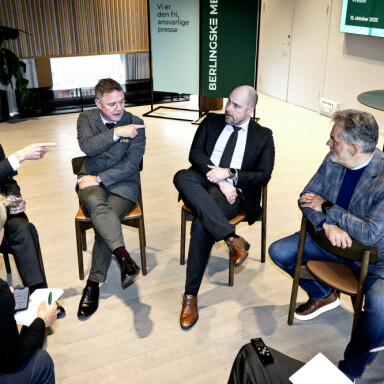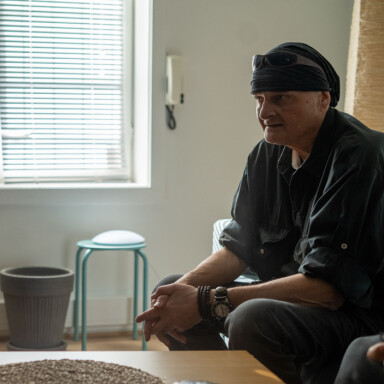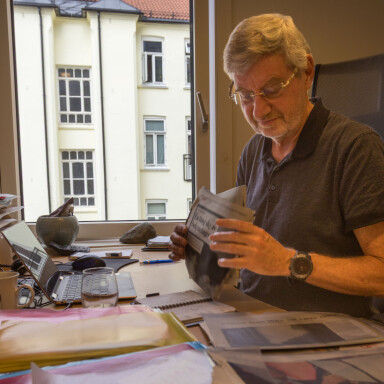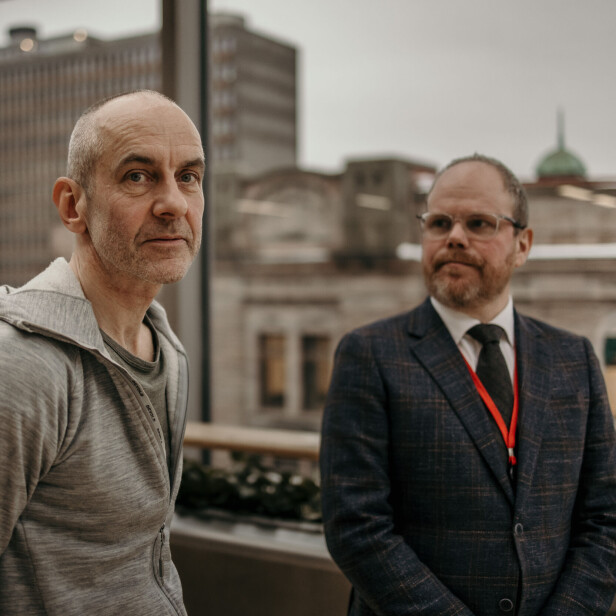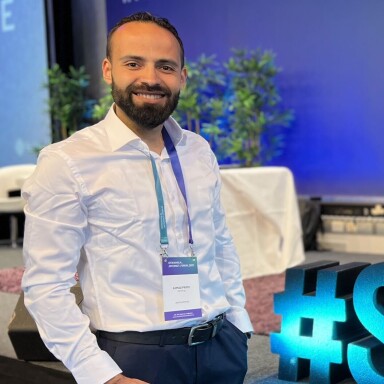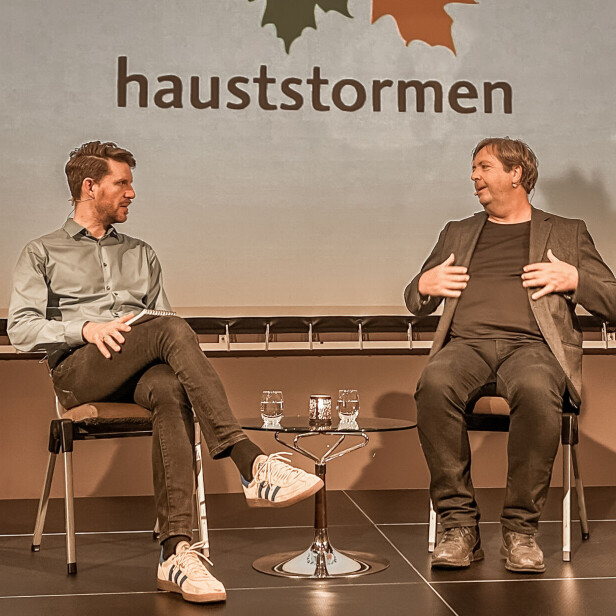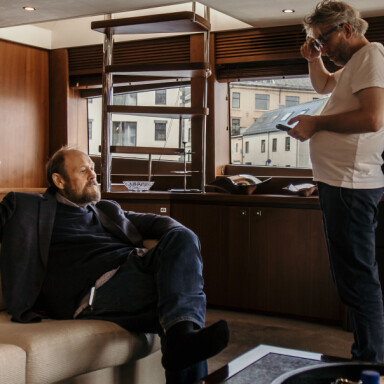Updated with response from Schibsted Media Group.
Schibsted will be closing down all paper-based newspapers in 2017 to concentrate on new media and classified ads. This information was presented in an in-house group meeting, and is alleged to have led the management of the subsidiary in Estonia to negotiate for a purchase of the company Eesti Media. Fear of Vladimir Putin’s friends is an important impetus here.
Journalisten does not know whether a turnaround in Schibsted’s interest in owning paper newspapers was announced by representatives of the group, or whether managers in Estonia presented this assessment. The information that Schibsted has set a final date for the printed word comes from Mart Raudsaar, general manager of EALL, Estonia’s newspaper publishers association. Raudsaar, who graduated with a Master’s degree in journalism from the University of Oslo, often comments on matters relating to the media industry and freedom of speech in Estonia. On 14 August, ERR, the state-run radio channel wished to interview him about Schibsted and Eesti Media.
Schibsted firmly denies that the company has any intent of leaving printed newspapers by 2017. Spokesperson Anders Rikter says to Journalisten that it would be pointless to set a date when printed newspapers are no longer important for the media conglomerate.
- We strongly refute the claims that we have a coordinated plan to shut down print operations at any given time. We are firm in our belief that print will be important for readers and advertisers for many years to come. It would be totally meaningless to set a fixed date for closure of print.
”Before I gave the interview, I made some inquiries,” he tells Journalisten. Raudsaar contacted a source at Eesti Media, but does not wish to disclose the source’s identity.
“This person told me that it was expressed in a meeting that Schibsted is moving in the direction of new media, and that printed newspapers will be wound down one after the other up to 2017.”
Journalisten is unaware of who participated in the meeting as representatives for Schibsted management and Eesti or when this meeting took place, but is told that this meeting occurred fairly recently. Raudsaar states that a vital question remains unanswered:
“I don’t know whether this (closing down printed newspapers, editor) applies in general, that is to say also in the Nordic countries, or whether it only applies to the Baltic states.”
“But Schibsted wants to get out of the Baltic countries?”
“This is how I understood it. But I don’t have first-hand information,” Mart Raudsaar replies.
The radio interview was frequently quoted in other media, and already the next day Anders Rikter, Communications Director at Schibsted, confirmed that the group is negotiating to sell Eesti Media.
The fact that this decision was known at all is due to a tip given to Äripäev, a business paper owned by the Swedish company Bonniers. The tip was that local management had registered a new media company.
Some hours after Äripäev had published its news in the afternoon on 13 August, Mart Kadastik, general manager of Eesti Media, confirmed that they were in negotiations with Schibsted about a purchase. Rumours about such a change of owners had then been circulating for almost a year, says Raudsaar.
An observer who closely follows what is going on in Estonian media is the former leader of the journalists association and PR manager Alan Alaküla, who has a background in the crown jewel of Eesti Media, the daily newspaper Postimees. Now he is the head of Tallinn’s representation in Brussels and chairman of the board of the city’s TV company.
Alaküla believes the news broke because negotiations had stranded.
“If they had been successful, the parties would have presented an agreement,” he says.
Estonian media speculate about a price tag set by Schibsted of between 20 and 456 million euro, not the least because the printing house Kroonpress is part of the deal.
General manager of Eesti Media, Mart Kardastik, has stated in an interview that management cannot finance the purchase alone. This has led to speculation as to whether Schibsted would be willing to sell with one hand and lend money with the other.
The reason is alleged to be that there are few potential buyers, Gunnar Kobin, general manager of Eesti’s main competitor Grunnen Ekspress Grupp was heard to say in an interview. Some days later the company’s own newspaper – Ekspress – revealed that the same Gunnar Kobin and his main owner Hans M Luik contacted Schibsted this winter to buy their competitor.
Ekspress Grupp is not new to buying out Scandinavians. They had earlier rid themselves of Swedish Bonniers, which owned half of Luik’s company from 1998 and disappeared in 2001.
But it is felt to be unthinkable that the competition authorities would accept that Ekspress could buy their main competitor, which would lead to absolute domination of the market.
However, there is another possible buyer who would probably not have any problems with the competition regulations. The assumed interested party is right around the corner and has money to spare. It’s the Kremlin-controlled Gazprom Media.
Just the idea of such a challenge is sufficient to assemble many forces in Russia’s small neighbours Estonia and Latvia.
“If we don’t buy, Gazprom will.” This is the reasoning offered by a source in the industry, who wants to remain anonymous.
Schibsteds spokesman Mr. Rikter also points to the speculations about the possibilites of Gazprom Media as a buyes of Eesti Media.
- We do not comment on speculation on what interested parties there might be in any particular process. But we would like to mention the fact that Schibsted have been a proud owner of Eesti Meedia for the last 15 years based on sound principles of editorial independence. During this time, Eesti Meedia has developed into a well-positioned media group with a good economic foundation. We have worked closely with the management team for 15 years, and share their visions and values for Eesti Meedia.
In the article in Ekspress, reporter Dannar Leitmaa claims that Schibsted has received an offer from Gazprom, but turned it down. In a mail to Journalisten, Leitmaa states that his source is highly respected.
But it cannot be general manager of Eesti Media Mart Kadastik. To Journalisten he calls this information a blatant lie, spread by the company’s main competitor.
Regardless, speculations are rampant. Any doubt as to which money is behind a bid will immediately lead people to look to Russia. This applies to Estonia’s business community in general and the media industry in particular.
The first to name Gazprom in public as a possible buyer was the mayor of Tallinn, Edgar Savisaar. He was the Prime Minister of Estonia when Postimees was privatized after the dissolution of the Soviet Union.
Now Savisaar wants to do the opposite. He wants the Estonian state to take over to ensure control over the influential newspaper. Tallinn local authority can help if needed.
“There is speculation that Postimees may be taken over by capital directly tied to Gazprom. Others believe that the buyer will be no less than Prime Minister Andrus Ansip, who wants to safeguard his future,” Savisaar writes in a press release.
He continues:
“To avoid these speculations and many others, it would be best to sell the flagship Postimees to the Estonian state and the general public.”
It is rare that Gazprom is named in public in such contexts. But Edgar Savisaar was not the first to make such a suggestion.
The day before Mart Raudsaar referred to the Russian giant. He stated that it is better that management take over as owner than a hostile company, a company that certainly does not have journalism as its primary business.
“You mean Russian Gazprom?”
“I have no comments on that, but there are companies buying other enterprises in Estonia and Latvia.”
Raudsaar warns against all forms of hidden takeovers:
“For media, credibility is by far the most fundamental issue. That is why we must have complete transparency so we know who owns shares, right down to the bottom row.”
Estonia has no media oligarchs, he maintains. That is why the country scores high on the press freedom index of Reporters Without Borders in 2013, even if the country fell from third place in 2012, the place Norway now holds, to eleventh, right behind Sweden.
However, compared to other former Soviet states this standing is excellent. Neighbour Latvia holds the 39th place. And this is where Raudsaar finds his horror story.
Latvian newspaper Diena enjoyed a special position in the country after independence in 1991. It was owned by the Swedish company Bonniers, but was sold quickly and unexpectedly in 2009 together with the business paper Dienas Bizness. The owner was unknown to most.
Among the owners there have later been an Estonian businessman, a British family and a Latvian businessman. He assumes that behind the stage one would find the country’s three oligarchs. In a few months the newspapers lost one third of their subscribers.
“What happened with Diena was a dreadful example that credibility and readers can vanish quickly. For a long time Diena was the most influential newspaper in the Baltic states. This is no longer the case, now it will probably be Postimees,” says Raudsaar.
“Who owns Diena today?”
“We can’t be certain about this, and this is why we must ensure that we don’t end up with the same result here. We must know where the money is coming from, who the owners are and that there are no secret investors. There is broad agreement on this.”
Many people find it worrying that the Scandinavians are leaving the Baltic states. “Schibsted has been a popular owner, and stayed on even if the subsidiary did not earn significant profits for the group,” says the leader of the newspaper publishers association:
“Scandinavian money has always been a stabilizing factor here, particularly during the crisis.”














